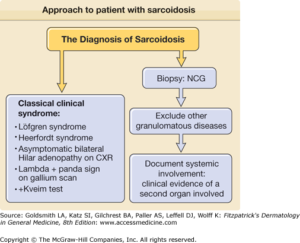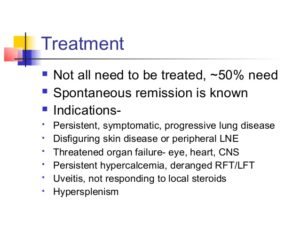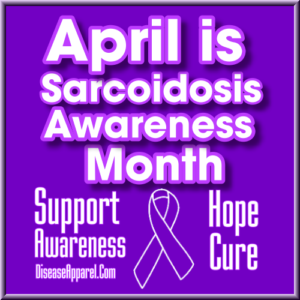1918 Pandemic (H1N1 virus)
1957-1958 Pandemic (H2N2 virus)
1968-1969was caused by an influenza A (H3N2) virus comprised of two genes from an avian influenza A virus, including a new H3 hemagglutinin, but also contained the N2 neuraminidase from the 1957 H2N2 virus.
2009-2010 Swine Influenza is an infection caused by any one of several types of Swine Influenza viruses. Swine Influenza is any strain of the Influenza family of viruses that is endemic in pigs.
Pandemics we have had in history and most of the people back than also got through it just like we will today with Corona VIrus. Unfortunately their were some deaths but the majority beat it and we will also. Keep in mind death carries many factors in causing it, past history or age (geriatric if not very young), low immunity (like a pt receiving chemo for cancer), lung or cardiac disease history. So this must be kept in mind.
Previous Pandemics in the United States: Reference is the CDC:
“1-1889-1890 Asiatic flu” or “Russian flu”, was a deadly influenza pandemic that killed about 1 million people worldwide. … For some time the virus strain responsible was conjectured to be Influenza A virus subtype H2N2. In the modern industrial age, new transport links made it easier for influenza viruses to wreak havoc. In just a few months, the disease spanned the globe, killing 1 million people. It took just five weeks for the epidemic to reach peak mortality.
The earliest cases were reported in Russia. The virus spread rapidly throughout St. Petersburg before it quickly made its way throughout Europe and the rest of the world, despite the fact that air travel didn’t exist yet.
2-1918-1920 Spanish Flu – influenza type A subtype H1N1 January 1918 to December 1920, The number of deaths was estimated to be at least 50 million worldwide with about 675,000 occurring in the United States.
3-1957-1958 Asian Flu Pandemic – (H2N2 virus) In Feb 1957 a new influenza A (H2N2) virus emerged in East Asia. It was first reported in Singapore in February 1957, Hong Kong in April 1957, and in coastal cities in the United States in summer 1957. The estimated number of deaths was 1.1 million worldwide and 116,000 in the United States.
4-1968-1969 Hong Kong Flu Influenza – a new influenza pandemic arose in Southeast Asia and acquired the sobriquet Hong Kong influenza on the basis of the site of its emergence to western attention. Once again, the daily press sounded the alarm with a brief report of a large Hong Kong epidemic in the Times of London.
A decade after the 1957 pandemic, epidemiologic communication with mainland China was even less efficient than it had been earlier. This new H3N2 influenza virus emerges to trigger another pandemic, resulting in roughly 100,000 deaths in the U.S. and 1 million worldwide. Most of those deaths are in people 65 and older. H3N2 viruses circulating today are descendants of the H3N2 virus that emerges in 1968.
5-1980s-HIV/AIDS – Americas.Since the first cases of acquired immunodeficiency syndrome (AIDS) were reported in 1981, infection with human immunodeficiency virus (HIV) has grown to pandemic proportions, resulting in an estimated 65 million infections and 25 million deaths (1,2). During 2005 alone, an estimated 2.8 million persons died from AIDS, 4.1 million were newly infected with HIV, and 38.6 million were living with HIV (2). HIV continues to disproportionately affect certain geographic regions.
6-2005-2012 Death Toll: 36 million
Cause: HIV/AIDS
First identified in Democratic Republic of the Congo in 1976, HIV/AIDS has truly proven itself as a global pandemic, killing more than 36 million people since 1981. Currently there are between 31 and 35 million people living with HIV, the vast majority of those are in Sub-Saharan Africa, where 5% of the population is infected, roughly 21 million people. As awareness has grown, new treatments have been developed that make HIV far more manageable, and many of those infected go on to lead productive lives. Between 2005 and 2012 the annual global deaths from HIV/AIDS dropped from 2.2 million to 1.6 million
CDC states “AIDS has claimed an estimated 35 million lives since it was first identified. HIV, which is the virus that causes AIDS, likely developed from a chimpanzee virus that transferred to humans in West Africa in the 1920s.”
7-2009-August 2010 – The most recent flu pandemic in the US, initially known as “swine flu,” occurred in 2009 with a novel influenza virus, H1N1, not previously identified in either animals or humans, per the CDC. The virus was actually first detected in the US, and spread quickly cross the US and the world. According to the CDC, between April 12, 2009 and April 10, 2010, there were 60.8 million cases, 274,304 hospitalizations, and 12,469 deaths (range: 8868-18,306) in the US due to the virus. The CDC also estimated that up to 575,400 people died worldwide.
According to the CDC, the 2009 flu pandemic primarily affected children and middle-aged adults (older adults had immunity, likely from a previous exposure to a similar H1N1 virus). And while the pandemic officially ended on August 10, 2010, the (H1N1)pdm09 virus continues to circulate as a seasonal flu virus, causing illness, hospitalization, and deaths worldwide every year.
Pandemics go back into 166 AD. Antonine Plague
Death Toll: 5 million
Cause: Unknown
Also known as the Plague of Galen, the Antonine Plague was an ancient pandemic that affected Asia Minor, Egypt, Greece, and Italy and is thought to have been either Smallpox or Measles, though the true cause is still unknown.
NOW CORONA VIRUS. CDC states:
In the USA:
Total cases: 525,704
Total deaths: 20,486
Jurisdictions reporting cases: 55 (50 states, District of Columbia, Guam, Puerto Rico, the Northern Mariana Islands, and the U.S. Virgin Islands)
Why NYC the worst with Corona Virus (COVID 19) look up on the internet who is the filthiest city in America if not the top 5, look up the population on NYC in the 5 boroughs, the amount of low class income people in NYC, the amount of traveling in and out of NYC, Queens alone has a national airport, the peer with traveling around the world on cruise ships. Also NYC is a sanctuary city. Their are many factors involved and all these play a role.
We will get through this and unfortunately pandemics repeat in history!







